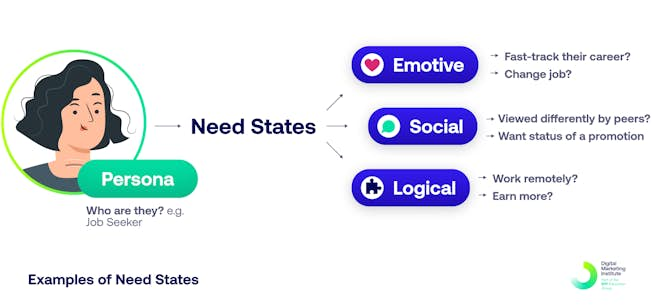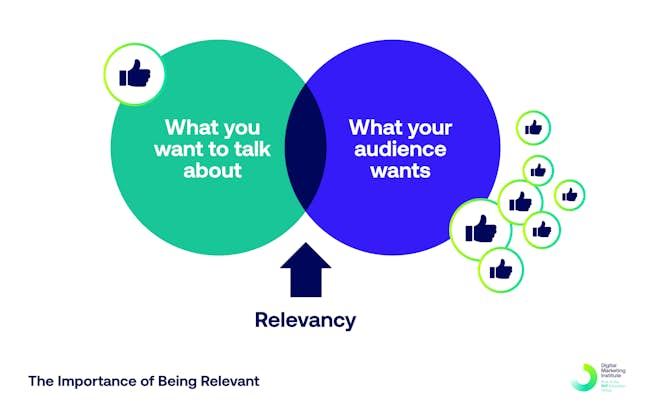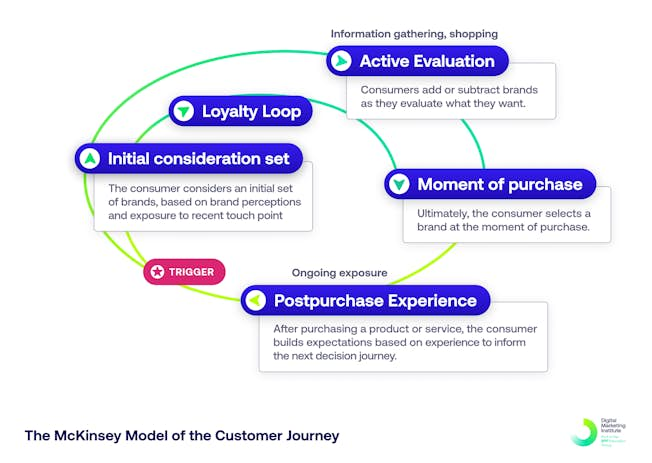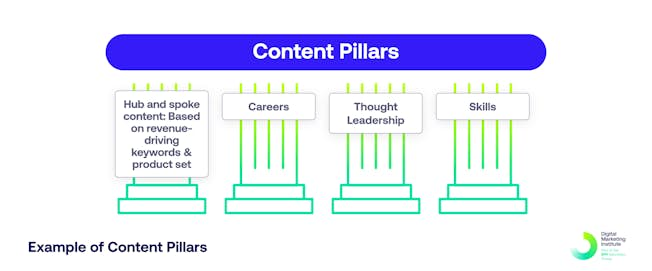Article by: Mischa McInerney (https://digitalmarketinginstitute.com/blog/build-a-content-marketing-plan-in-10-steps)
Content marketing is something you’re aware of as a marketer, but do you realize how effective it can be at all stages of the customer journey?
While many marketers create landing pages, blogs, or copy for social media posts, great content marketing requires a strategic and multi-faceted approach (and most importantly it relies on you understanding who you’re talking to).
In this blog, we’ll start by looking at what is content marketing and then explore ten steps to help you develop a successful plan.
- Set objectives
- Understand your audience
- Be relevant
- Use the content marketing funnel to drive sales
- Establish your content pillars
- Develop a Push-and-Pull approach
- Use a hub-and-spoke model
- Create data-capture content
- Amplify your brand using advocates
- Set KPIs and measure success
Let’s get started!
What is Content Marketing?
Content marketing is a strategic marketing approach that involves creating and distributing content that your audience finds valuable.
“Content marketing needs to be relevant and consistent. It’s to attract and engage a target audience and provide information, entertainment, or utility. It’s not a sales message. That’s content marketing in a nutshell,” says Mischa McInerney, Chief Marketing Officer at the Digital Marketing Institute.
1. Set objectives
The path here is to set objectives that look at all stages of the funnel. This will help you to understand the motivation at each stage and see what content is required to drive them to the next.
For each stage, set KPIs that are relevant and important to your business. Here’s an example of how you can map out your objectives:
1. Grow brand reach and engagement
- Increase unprompted brand awareness from x to y
- Increase reach and engagement on social media from x to y
2. Consideration
- Grow non-blog organic traffic from x to y
- Grow blog traffic from x to y
3. Conversion
- Increase organic sales from x to y
- Increase data capture from the blog from x to y
4. Advocacy
- Increase shares on social media from x to y
- Increase the number of backlinks to the website from x to y
- Increase testimonials from customers from x to y
DMI Insider tip: Have one or two objectives under reach and engagement, consideration, conversion and advocacy. Keep it really simple to begin with, don’t overcomplicate it.
2. Understand your audience
Before you develop any content, you need to understand who you are talking to and what they need. That requires you to build target buyer personas.
You can get this type of information in Google Analytics (GA4) to examine who your audience is. For example, what percentage is male or female? What devices are they browsing on? What ages are they? What interests do they have and what sites are they looking at?
DMI Insider Tip: We often see that people are browsing career sites. So we know they’re either changing or starting their careers. The second thing we know is that they shop for value. That’s important because when we’re building landing pages, the value side of our messaging needs to be dialed up.
Once you establish who your target personas are, you need to figure out their need states: these can be emotive (desire or fear), social (FOMO or vanity) or logical (financial gain). From this point, you can create content to tap into those needs.

3. Be relevant
Being relevant is the content sweet spot! It’s the intersection of what you want to talk about and what your audience wants.

A lot of brands don’t really get this part of the content plan. They talk about what they want to tell people about, rather than focusing on what the customer needs and wants to hear.
But how do you know how to be relevant to your audience? Here are some starting points:
- Keyword research
- Social listening
- Leverage SEO
- Review in-house data
- Experiment with content
- A/B testing
- Ask your customers
- Track competitors
DMI Insider Tip: Listening to your customers through social channels is one of the easiest and most effective ways to connect with them, as well as with your competitors and others you’d never thought of following. Learn more in our comprehensive guide to social listening.
4. Use the content marketing funnel to drive sales
Content marketing can have a huge impact on the customer journey. The McKinsey model shows the four stages in a loop as people decide on a purchase.

At each stage of the journey, you should use different channels and content:
- Consideration – Build brand reach and engagement through engaging content and optimized SEO.
- Evaluation – Build brand advocacy through customer testimonials and influencer engagement.
- Purchase – With stronger brand recognition, you may see an increase in brand-led searches, increase the clickthrough rate and reduce the CPC.
- Post-purchase – Increase upsell and renewals through compelling content: using the right message to the right audience at the right time.
DMI Insider Tip: The more content you create where you’re talking about meaningful and relevant content, the more people will share your social media posts and the more top of mind you’ll be when they’re actively evaluating what product or service they want.
5. Establish your content pillars
The content pillars should be a blend of both brand and commercial drivers. One pillar could be a hub and spoke model where you can drive traffic to a website, and increase keyword rankings and metrics like leads or sales.
DMI Insider Tip: Decide on four key business pillars. Some will be brand, like thought leadership and some will be commercial. There should be a blend of two, no more than four, and all of your content should fall under each of these pillars.
Here’s our example of content pillars to help guide you:

6. Develop a push-and-pull approach
The push-and-pull approach is valuable to brands as a strategy to communicate with consumers.
A combination of the two can help consumers make purchasing decisions that go in your favor, but you need a balance: Push too hard and you can put potential customers off, Pull too lightly and they will never stop to read your content. So how can you use the Push-Pull tactic effectively?
Push
This technique is about a brand tooting its own horn and promoting a product or service. For example, pushing out your content via all the social media channels you’re using, as well as your podcast or webinar series. The aim is to capture data through a download or sign-up or gain followers.
KPI = Advocacy or community growth.
Pull
The aim here is to attract people to your website, product or service and create loyal customers that advocate on your behalf. This relies on website and SEO optimization, and referrals that link to your content (blog or otherwise).
KPI = Website traffic, page rank, domain authority and data capture.
7. Use a hub-and-spoke model
The hub-and-spoke model helps you generate content in a focused way around a broad topic.
It’s a great way to build relevance and authority on a topic/s while also helping you increase keyword rankings, traffic, and metrics like conversions, leads, and sales.
8. Create data-capture content
Data capture content is content that prompts people to provide their personal information.
The key is to promote relevant and valuable content on top-performing pages or blogs because you know that traffic is going to that page.
Types of data capture content include:
- Ebooks
- Infographics
- Original research
- Expert-led webinars
- Live videos
- In-depth guides
- Templates
- Toolkit
- Tests
DMI Insider Tip: The content you offer needs to add value. It’s like a fair value exchange. For example, if you are a clothing company, people could visit a blog on top tips for dressing for a wedding. The download could be something like a guide to dressing for your shape.
9. Amplify your brand using advocates
With customers becoming less inclined to trust advertising (64% take action to avoid ads on free and ad-supported video services), advocates, or ambassadors, are a powerful way to cut through the noise and get your brand noticed.
Three types of advocates can help amplify your brand:
- Influencers – Well-known celebrity influencers are out of reach for many brands, but micro-influencers or SMEs can be effective as the engagement rate is higher and is more authentic.
- Loyal customers – Use customers to advocate for the brand through reviews or testimonials as they have experience with the product while employees can also be great advocates.
- Referrals – Referrals are powerful as they have been recommended by someone trusted. Reward customers for referring a friend.
DMI Insider Tip: Who are your top ten people who consistently engage with your content? They are your advocates. Your influencers are the people who are opinion leaders in that space and use social media listening tools to identify who those influencers are.
10. Set KPIs and measure success
In your content marketing, it’s essential to set Key Performance Indicators (KPIs) to measure success. It’s the only way that you will know if your content marketing strategy is working and gain insight into what content is driving sales.
Examples of content KPIs are:
- Website traffic
- New vs returning visitors
- Dwell time
- Engagement
- Downloads or sign-ups (data capture)
- Bounce rate
- Conversions
- Backlinks
- Shares